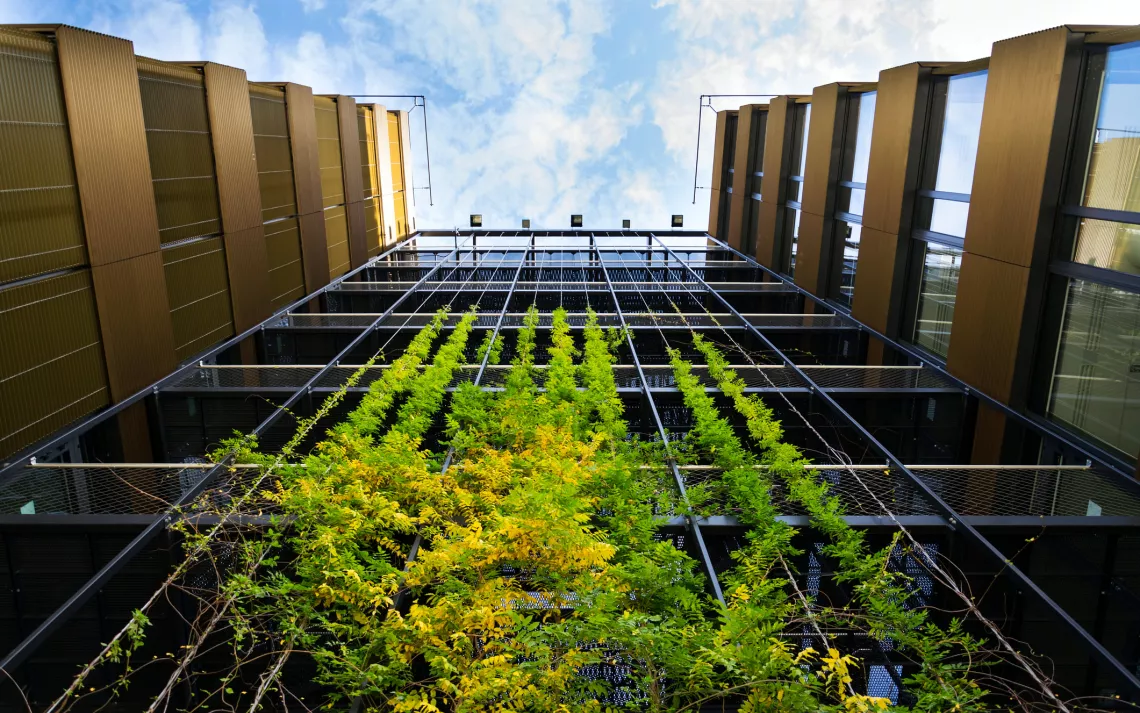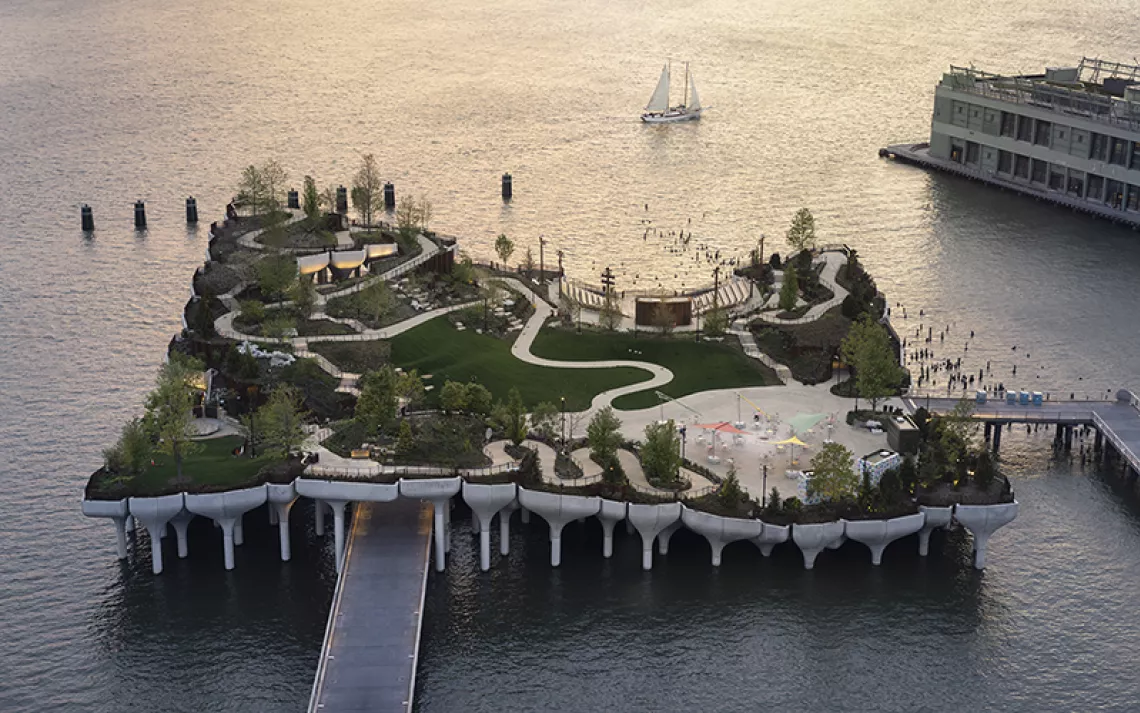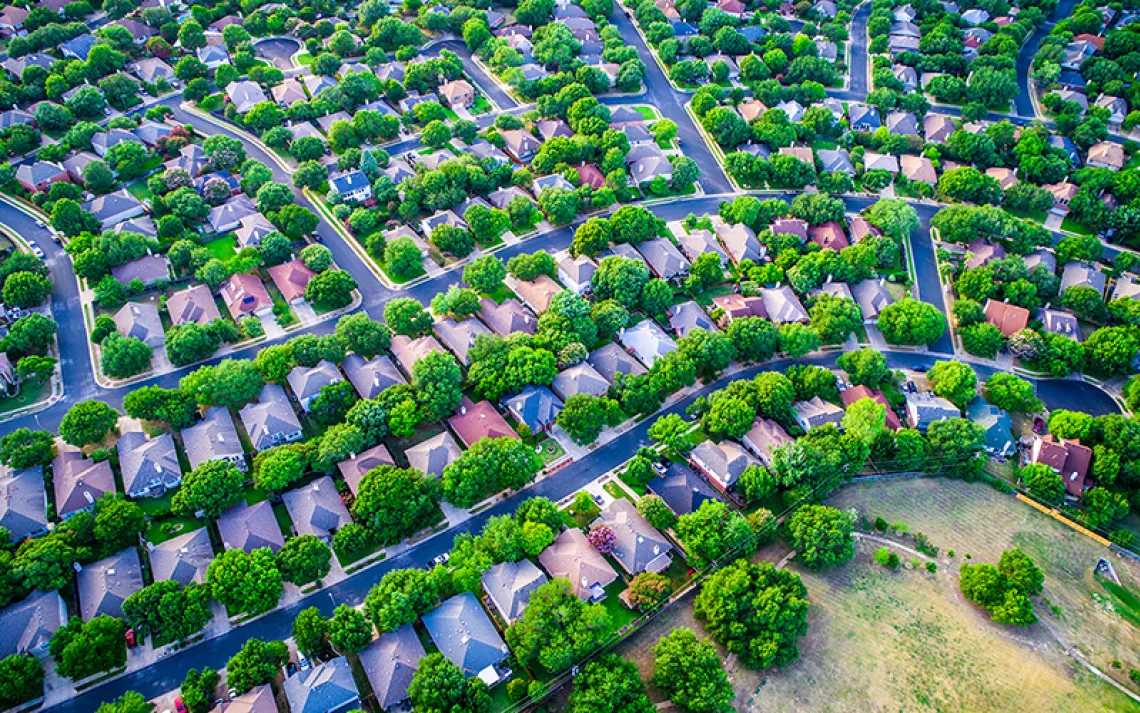Building Better: Art or Eco?
Architects wrestle with their role in a climate-challenged world

Pablo Picasso's art left virtually no carbon footprint. Same for the creative work of Twyla Tharp, Ernest Hemingway, and Jimi Hendrix. Not so for Frank Lloyd Wright, Philip Johnson, Mies van der Rohe, and their architectural successors.
Buildings' lighting, heating, air-conditioning, and ventilation systems collectively consume an estimated 70 percent of the United States' electricity and account for almost half of its carbon dioxide emissions. Globally, building construction uses millions of tons of energy-intensive materials, including concrete, steel, glass, and lumber.
"If we have to build, then we should make a special effort to make the buildings as sustainable as possible," says architect Cesar Pelli, known for his striking use of glass and his 88-story Petronas Towers in Kuala Lumpur, Malaysia, the tallest twin buildings in the world. Architectural icons, the towers have also won acclaim for their "cool recovery" energy system, which halves the amount of energy required for air-conditioning.
But don't call the profession green just yet. Some architects worry that the flood of announcements of buildings earning acclaim from the U.S. Green Building Council's Leadership in Energy and Environmental Design (LEED) program can detract from a building's aesthetic merits and even devolve into a symbol of easy self-congratulation.
"LEED is very good in one very basic way: It's measurable and has made it possible for clients and architects to target expectations in the design process," says Robert Stern, dean of the Yale School of Architecture. "It's environmental advertising." Green features run the risk of appearing tacked on like ornamentation, which, to many architects, is the opposite of art. "A sophisticated building in an environmental sense is not ipso facto a sophisticated building in a design sense," says Eric Owen Moss, director of the Southern California Institute of Architecture.
For many architects, a successful building is evaluated in broad terms: Can you fall in love there? Can you contemplate the human condition there? Does it evoke society's tensions? Addressing climate change, they argue, shouldn't take precedence.
"You can have art and performance at the same time," says Southern California-based architect Thom Mayne. "For most people--especially hard-core environmentalists--there's a notion that you have design or you have performance. For today's serious architect, it's always an art form. It has to start there or it's not architecture--it's building."
Still, Stern says, "a lot of the buildings that are getting the public's attention are environmentally sophisticated." In the past two years, those buildings have included Norman Foster's LEED-gold-rated Hearst Tower in New York City, Renzo Piano's New York Times Building, Mayne's San Francisco Federal Building (see "Comfort Zone," May/June 2008), and Stern's Comcast Center in Philadelphia. Meanwhile, architecture firms such as the one headed by Rem Koolhaas are designing entire green cities. Koolhaas's firm also garnered a LEED designation for its Seattle Central Library, which the late critic Herbert Muschamp called the "most exciting new building" he had ever reviewed. Mayne's next major work is a 300-meter office tower in Paris's La Défense complex that will feature a rooftop wind farm.
Some contemporary architects seem hostile toward the environment. Since the opening of the Frank Gehry–designed Guggenheim Museum in Bilbao, Spain, the past decade has seen the rise of the so-called starchitect trend, in which a handful of designers have gained prominence as much by force of personality as by the brilliance of their designs. They have stirred interest in contemporary buildings but have been derided for favoring flair over functionality. Writing in the New York Times Magazine, Arthur Lubow summed up the starchitects' aesthetic goals: "Making an impression may be their most important function."
Sometimes eco is no match for ego. Known for his abstruse theories about space, architect Peter Eisenman styled the Arizona Cardinals' bulging new football stadium after a barrel cactus but apparently pays little attention to the rest of the biosphere. "Mr. Eisenman," a spokesperson said curtly, "does not wrestle with sustainability."
 The Magazine of The Sierra Club
The Magazine of The Sierra Club



